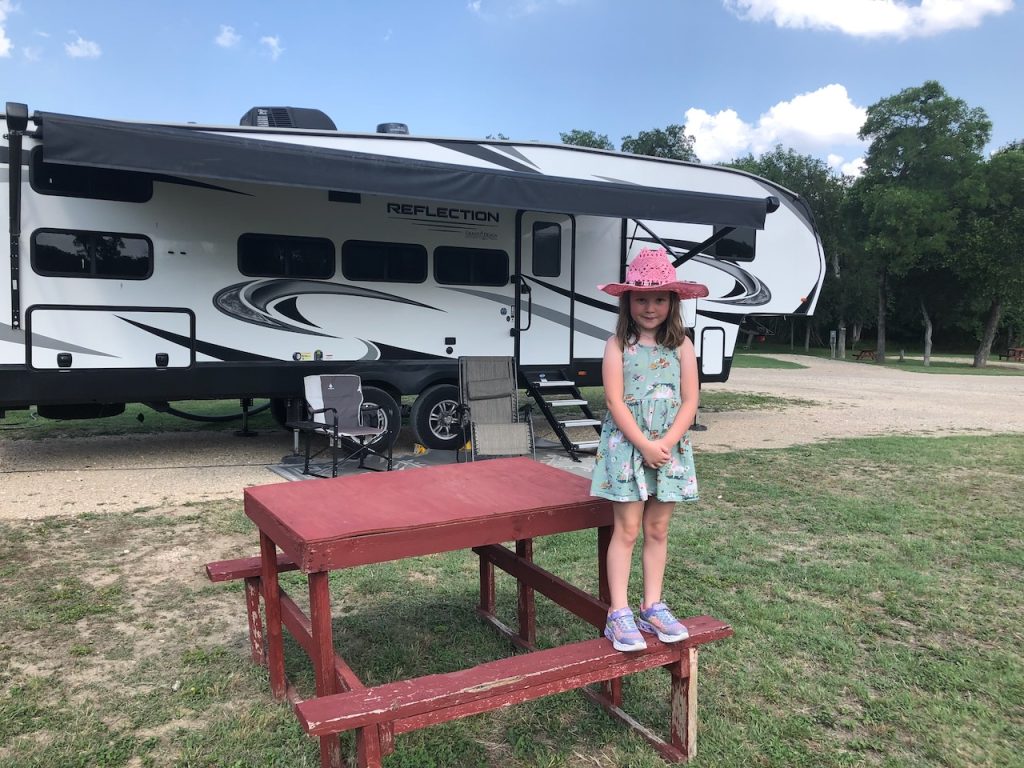
There were a lot of unknowns when we set out on our first multi-month RV adventure. Our biggest questions and worries were: How will we work? What about school? Will the kids be lonely without their friends and activities? What if we can’t get decent internet? Will there be enough space for us all?
We had experimented our first year, back in 2021, with a month-long trip during the school year and this gave us the chance to test incorporating work and school into our time on the road. However, in this first attempt we still had some safety nets, specifically around timing. Our trip started mid-June, so the kids were actually only missing three weeks of school at that point, and being on the verge of summer with report cards already completed by their teachers, they likely weren’t missing the most learning-intense time of the academic year. We also found that on the work side, our clients had started to slip into “summer mode”, so our work commitments were lighter and more flexible.
This initial experiment was a helpful step in our learning, yet it was clear when standing on the verge of an April-June multi-month trip the following year (in 2022) that the stakes were much higher. Here is specifically how we tackled each of these important unknowns and what we learned.
1. How Will We Work?
One of the dreams we actively pursue is early financial independence, but until we get there we need to work! Luckily, striving for being financially free does not mean you have to slog it out in a cubicle for 25-35 years until you can live the care-free retired lifestyle. If your dreams include travel, it is entirely possible to enjoy living wherever you’d like WHILE you’re working towards being financially independent. There are many different kinds of work, and we noticed some are easier than others. As entrepreneurs, we are more accountable to ourselves and our clients than to a manager or a boss, so that made it a little easier to get started since we didn’t have to get approval from anyone. However, if you do work in an organization where you report to others, it is still possible. Tim Ferriss does a good job of explaining in detail in his book “The Four-hour Work Week” how to make yourself indispensable in an organization and gain the permission you need to work abroad. We met many people on the road who had done just that and were doing their 9-5 job remotely. This is even easier to achieve now in a post-Covid environment where the world is more adept at meeting virtually.
Even within a job, there are often different types of work. For us, some parts of the business are largely managed by employees and need only minimal and occasional input from us. For this kind of work, we set up a routine “pulse” meeting on Monday mornings so we could ensure we were available to employees for support and decision-making, while also staying on top of guiding the work along. This standing meeting didn’t seem to interfere with our flexibility because we would generally be traveling between locations on the weekend and doing outings in the afternoons. Other parts of our business involve us doing direct client work. This could include meeting with clients (more about this in the section about decent internet!) or doing work independently to deliver to clients. The latter was easy in the sense that we could be flexible with timing and didn’t have to worry as much about having an internet connection that was strong enough to support video conferencing. The hard part about the “deliverables” type of work was making sure we were disciplined enough to set aside the quiet time to focus and get it done – something that is generally easier to do in an office environment as anyone who worked from home with kids in the house during Covid can attest to! The reverse was true with client meetings. As long as the internet was good, we could get them done without too much self-motivation or discipline. However, it also meant finding enough quiet space for everyone (more about this in the section about personal space!).
Overall, we set goals for ourselves in terms of how many hours a week we generally wanted to be working and then planned our week out every Sunday to support this. This meant finding a balance between letting work commitments inform when we would plan for our adventures (e.g. “I have a meeting Thursday morning, so let’s do the full day at the zoo on Friday”) and letting our adventures inform our work commitments (e.g. “The weather looks best on Wednesday, so let’s offer the clients Tuesday or Thursday morning for that meeting we’d like to book”).
In the end, it may not always be as easy to work on the road as it is in a traditional office environment, but it was definitely manageable. We found that our work took less time because there was no commuting, no office chit-chat and we were more focused to get the work done so we could get onto other things.
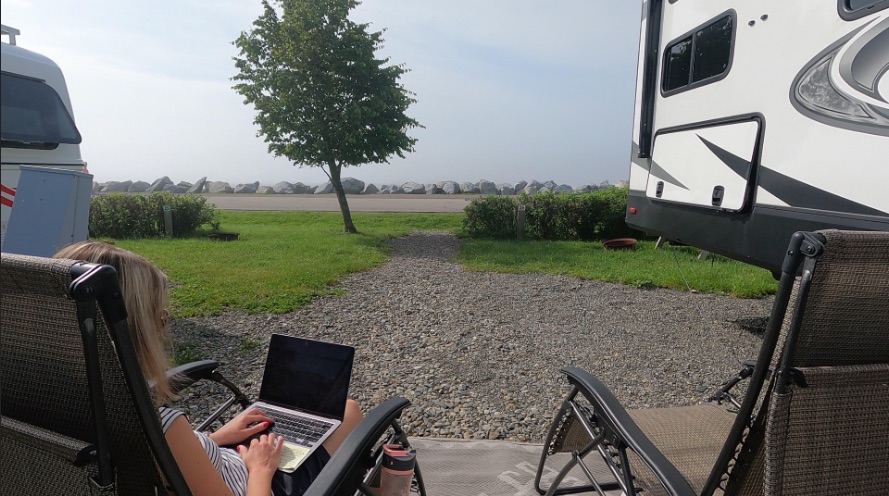
2. What About School?
Through our travels, we’ve come across all kinds of different options and philosophies around schooling. Some people will home school and others believe in unschooling. Some kids do virtual school and others have private tutors. It’s very personal and you will need to decide what approach is important to you. With that said, one thing that we love about all the different options is that we don’t have to commit to the philosophy of just one approach. We’ve actually chosen different ways of educating our kids depending on the trip we’re taking and that flexibility has worked well.
In our first month-long trip we chose to homeschool the kids. It was a relatively short trip at the end of the school year, so I didn’t worry about them missing too much. I was familiar with some great educational online resources that we’d discovered in the early months of Covid when the kids’ learning had initially fallen on us as parents. We also had some workbooks geared for their grade level. I had spoken with the teachers before leaving to understand what they would be missing and used the workbooks and resources as Josh and I took turns teaching them ourselves. For us, I think this approach would have been better if one of us was working and one of us was teaching the kids and doing all the other planning/organizing involved with traveling. Instead, we were both trying to work and teach the kids and we found it to be a little messy. I also think that people who are trained teachers have an advantage with this kind of schooling. We’ve met other families on the road with a parent who actually had teaching experience and they were able to do the homeschooling thing almost effortlessly. For our family, we would definitely do this approach again for short trips (and maybe one of us would not work during that time), but we don’t currently have the interest or enthusiasm that I think it would require to do it well long-term.
When it came to our first multi-month trip, we initially considered virtual school (an option that was still being offered at the time by our school board as an alternative during the Covid years). We could have transitioned the kids out of in-person school in early February and into the virtual school option and continued that way throughout our trip. This was an incredible opportunity as it wouldn’t have cost us a thing! Plus, the curriculum was completely aligned with what they would have been learning in-person. Yet despite how attractive this option was, we decided against it for three reasons. Firstly, the transition date was early February and we didn’t leave until early April, so we would have had them virtual schooling from home for two months which seemed unnecessary and logistically cumbersome. Secondly, we knew from our experience with virtual school during Covid that the school day is often quite long and full of big breaks and some subjects that we felt we could do without for a while because we were covering them in other ways (e.g. gym, music, drama). Instead, we wanted a condensed school day. The third and major reason was because in the fall we had been introduced to a newly-retired school teacher from their school and she had begun tutoring them. She was amazing! She had personal relationships with the kids in-person teachers from her time there and was able to work closely with them to support the transition. Once on the road, we fell into a routine where she would work with the kids from 9-11am Monday through Thursday. I’d also arranged for a french tutor between 11am-noon twice a week and music lessons with our piano teacher from 11-noon once a week (he had already been working with them virtually anyway and the kids simply swapped out piano for a ukulele!). In this way, we had an arrangement with the kids: if you focus and work hard between 9am-noon on Monday through Thursday, you get every afternoon and every Friday off. We ended up finding that they were learning all the time – formally in the mornings and through the experiences we were engaged in during the other times.
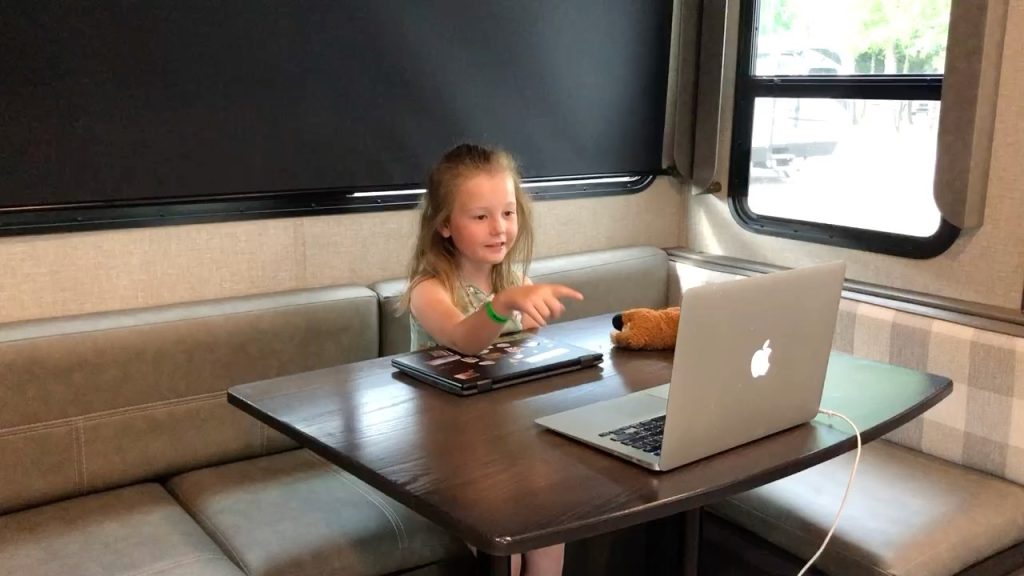
3. Will The Kids Be Lonely Without Their Friends And Activities?
Conventional living, especially for people with kids, is often packed with a busy schedule of activities and social engagements. It can be both a blessing and a curse. For us, one of the things we were most excited about when starting our “life travel” was the opportunity to slow life down a little and disconnect from the relentless busyness. At home, it seemed like no matter how hard we tried to set boundaries and create space for ourselves during the week, we would inevitably get swept up in the current of extra-curriculars, appointments, events, get-togethers and play-dates. Sometimes it was fun; often it was exhausting. However, our kids were used to the constant stimulation and social interaction. They were always surrounded by the familiar faces of friends and the predictable rhythm of their activities. We worried that, on the road, they would feel isolated and lonely.
So did they miss their friends and activities? Sometimes they did. Most of the time, they did not. Time away from their activities and friends meant that they played more closely together and formed a tighter bond. Time away also meant that they were motivated to make new friends along the way, often creating fun friendships quickly in the places we were staying. In those cases, learning to say goodbye was a new challenge, particularly for the younger kids. For older kids, it may be easier to keep in touch – for example, my oldest daughter continues to text back and forth with a friend she made during our Texas trip.
Without a busy schedule and a calendar leading the way, the kids were challenged to find ways to spend their time. This would likely have been harder to adjust to in our usual setting, but because they were constantly surrounded by new environments and interesting things not yet experienced, they usually didn’t have any trouble. Every move meant a new play structure or different paths to hike together, so those kinds of things were constantly fresh and exciting.
There were definitely times when we would miss friends, particularly the few close relationships we each have. Our kids have attended more than one campground birthday party with new people we’ve met on the road, and while the festivities are still fun, it’s not as special as celebrating with someone you’ve watched grow over the years. Thankfully, technology has helped. All our kids would regularly have video calls with their friends from home while we were on the road, particularly on long drive days. Josh and I would occasionally draw on our experience from the Covid isolation days and set up a virtual “date night” with friends. For example, we would use a zoom call on our computers for the audio and video of being together while using our phones to join an online room for games like Euchre, Hearts or Spades. One of my closest friends and I discovered during Covid that we could use zoom to meet every Wednesday evening to scrapbook together. While we live on opposite sides of the same big city, it could take an hour or more each way to get together and we would need to pack up all of our stuff. So even at home, we soon found we preferred the virtual option. When we travel, I take a small amount of scrapbook supplies and we continue our get-togethers even on the road. Since we are currently part-time life travelers, we also use our touchdowns at home to reconnect with our long-term friendships and see those closest to us in person.
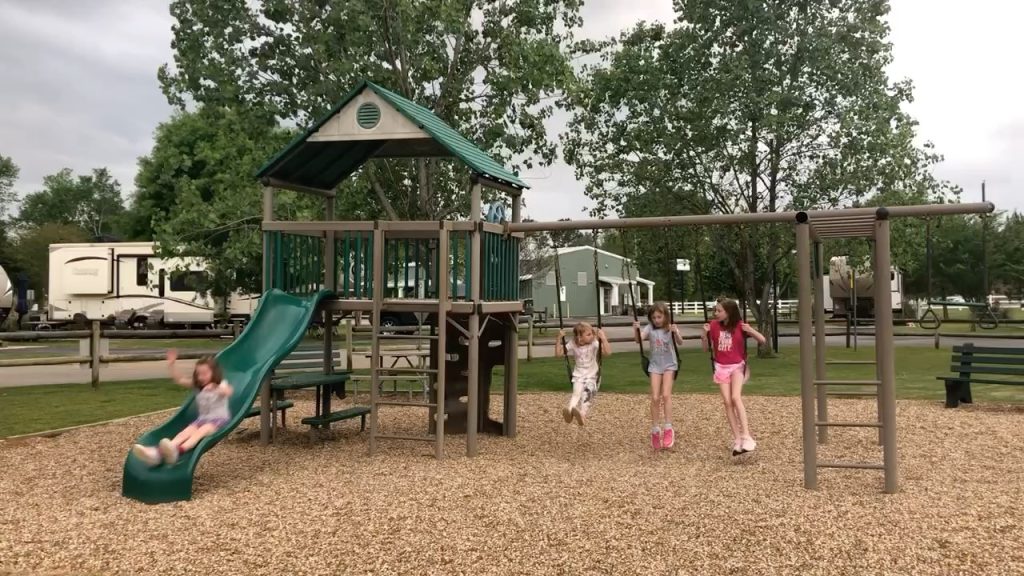
4. What If We Can’t Get Decent Internet?
This was a big one! The way we had answered questions 1 (how will we work?) and 2 (what about school?) meant that we were counting on having access to the internet. And not just a dribble of internet…we needed screaming-fast internet that could support video streaming by multiple computers at once. That’s a tall order, even at home sometimes! Out of all of the unknowns, this was the one that we worried about the most as it was foundational to the success of some of our other unknowns. We worried for good reason too because our connectivity could vary widely between different locations and even during the course of the day within the same location. However possible, we wanted to find ways to reduce the overall stress and anxiety around access to the internet so we could focus on enjoying our travels.
One approach that helped was creating redundancies. This meant we were at times paying for multiple modes of internet access, but because connectivity is so important to us, this is something we are always willing to spend a little extra on.
The #1 internet option we have in our toolkit is Starlink. As long as we are in a location that allows for a clear view of the sky, we can set up the Starlink unit and it has worked really well for us. Sometimes, in our trip planning, I will actually go as far as selecting a particular campground or a specific campsite knowing we’d like an open view of the sky.
Other times, we want to be in the woods or know that the environment is not going to work well with Starlink. In these cases, we go to our #2 option – a cellular router. We’ve set up this back-up internet in advance, always under a different telecommunications carrier than we have for our cell phones. When in Canada, we have Rogers for our cell phones, so we set up a cellular router from Bell. When in the States, we choose a US carrier. This option works well as long as you’re within a good distance of a tower for that particular provider.
If this isn’t the case, we try option #3, the campground wifi. Most campgrounds offer some sort of wi-fi service and it’s hard to know how good it will be until you get there. The only thing that’s certain in campground wi-fi is uncertainty. We’ve been in places that seemed like they should have great wi-fi and it was terrible. We’ve also stumbled across places that had amazing campground wi-fi when we least expected it. For example, we were pleasantly surprised at the quality of the wi-fi at a campground we stayed at in Great Smoky Mountains, which was a god-send because the thick foliage and remote nature of our location meant that options 1 and 2 were no good. I wouldn’t count on campground wi-fi, but we do often test it when we land in a place and it’s a great option when it works.
Our #4 option (and last resort) for internet is to tether to our phones and use the personal hotspot. This requires a strong signal from our cellular provider. We have had situations where options 1-3 were not working and we managed to save the day by getting internet in this way. One time, we pulled into our campsite later than expected and only had a few minutes to get ready for a virtual meeting. With no time to set up Starlink or fire up our cellular router or test out the campground wi-fi, we managed to tap into our personal hotspot immediately as a temporary measure and make it into our meeting on time. In the end, it’s nice to have options!
With all our traveling, we have had the odd time when none of these options worked. The first was one we could plan for. We were visiting the beautiful Sleeping Giant Provincial Park on the north side of Lake Superior and because we’d been there before, we knew the entire area was a complete dead-zone for signal. So we planned in advance to take the opportunity to clear our calendars and enjoy the experience of being completely disconnected. The second time that none of these options worked was one we didn’t expect. We were at a State Park in Arkansas and we could get internet through a couple of these options, but none of them was reliable. After a few frustratingly glitchy zoom meetings, we decided to reschedule the rest of the week to the following week when we knew we would be in a location that would be more promising. We were lucky to have that flexibility and it seemed like the simplest solution for us. However, if we weren’t able to shift things so easily, we probably would have gone looking for another place to stay and move before we’d planned to. Whatever happens, the key is to stay flexible and adaptable.
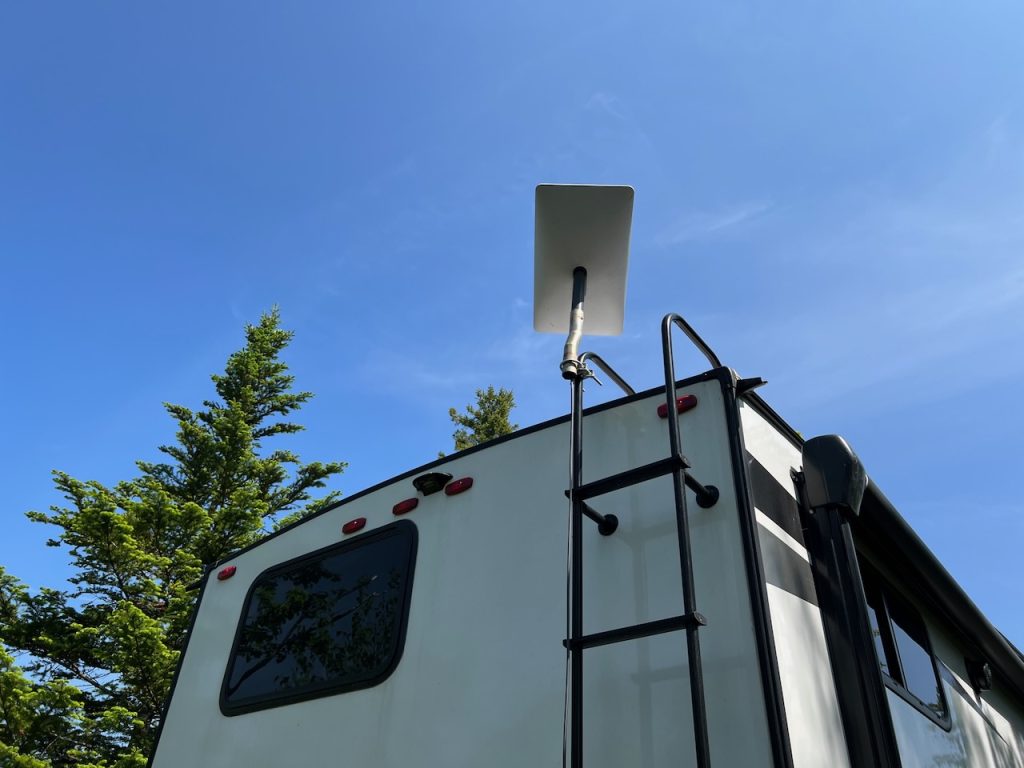
5. Will There Be Enough Space For Us All?
With 5 of us, sometimes even in a house we can start to get on top of each other. Kids are playing with toys in one room and someone wants to play alone. More than one person wants to watch a show or play video games on the same TV at the same time. Someone wants time to focus on something they’re working on and others are making noise. One thing we learned through Covid when everyone was housebound is that today’s open concept houses are terrible for the times when we all need to find a quiet corner to ourselves. So, if we struggle from time to time in a 2500 square foot home, how could we possibly manage to find enough space for all of us when we’re living in a 350 square foot RV?
I would love to say that we effortlessly figured it out and it was never a problem, but that isn’t the case. The truth is that, just like at home, sometimes there is enough space and sometimes there isn’t. We’ve learned that it usually has to do with a few key conditions – some of which we can influence and some of which are out of our hands. For example, the best way we’ve found to increase our living space on the road is to make use of the outdoors. There’s nothing better than sitting down with my computer to work at a picnic table or in my zero-gravity chair surrounded by trees or overlooking a lake. If bugs are an issue, we put up our bug tent. If the sun is an issue, we can put out the awning. This immediately creates so much extra space for us and we love being able to work outside where we can enjoy being surrounded by the beauty of nature. However, sometimes this isn’t possible. There was one day when we were in the Great Smoky Mountains that Josh worked from the driver seat in the truck because it was absolutely pouring rain. Obviously, participating in a virtual meeting from the front seat of your parked vehicle isn’t ideal, although we do have a little lapdesk for this purpose that makes it possible when necessary. We do our best to be able to make use of outdoor space by considering our needs when booking the locations or specific sites we’re staying in. When it comes to the things we can’t control, like weather, we try to have a back-up plan and stay flexible.
Another thing we’ve found helps is making creative use of the space we do have inside the RV. For example, if the kids are playing with toys indoors, our particular model of fifth-wheel doesn’t have much floor space in their bunkhouse room. Often they would set up their toys in the main area, which was a total tripping hazard when I would try to make meals. Instead, we discovered that our bed was a great piece of real estate to use for play during the day. The kids will set up their dolls or toy animals all over the bed and love to make use of the bedside tables and overhead shelf as far-off destinations in their imagined play world. They feel like they have lots of space and, for me, the noise and the mess is contained. At the end of the day, they scoop the toys into the bin and the room is ours again for the evening. Another pressure point for us with space is finding a quiet work space for a virtual meeting. We discovered in our particular RV that we have a shelf located near the bed that works perfectly as a desk. I can set the laptop on it, use the bed as a seat, blur the background on my video conference software and have a virtual meeting as if I was in the office.
When we use the outdoor and indoor space creatively, we are usually very successful in finding nooks and crannies for those that need quiet time or privacy for work and play. If someone is in need of some time to themselves away from the RV, then usually a walk around the campground or RV resort we’re staying in goes a long way to clearing the mind and finding some independence.
So that’s how we tackled these five big unknowns and some of the specific things we learned! Beyond the details, the common thread that was most helpful in all scenarios was our ability to experiment to try different solutions and stay calm, positive and resilient if things didn’t work out. What works one day or on one trip may not work on the next, so it is a constant evolution. But it is absolutely worth it!




